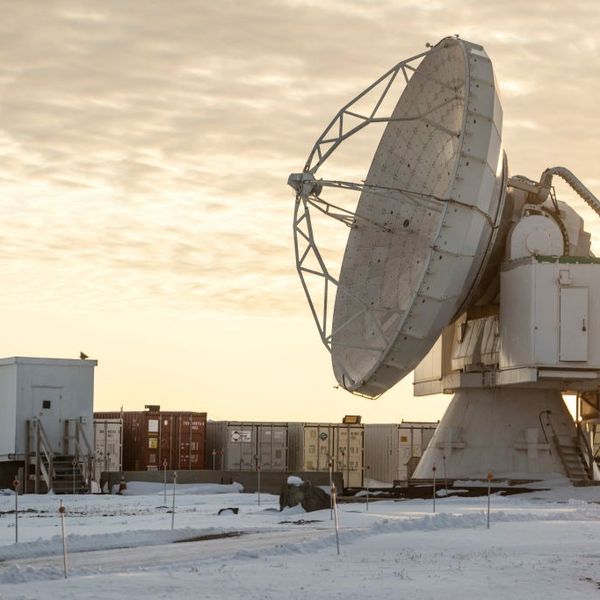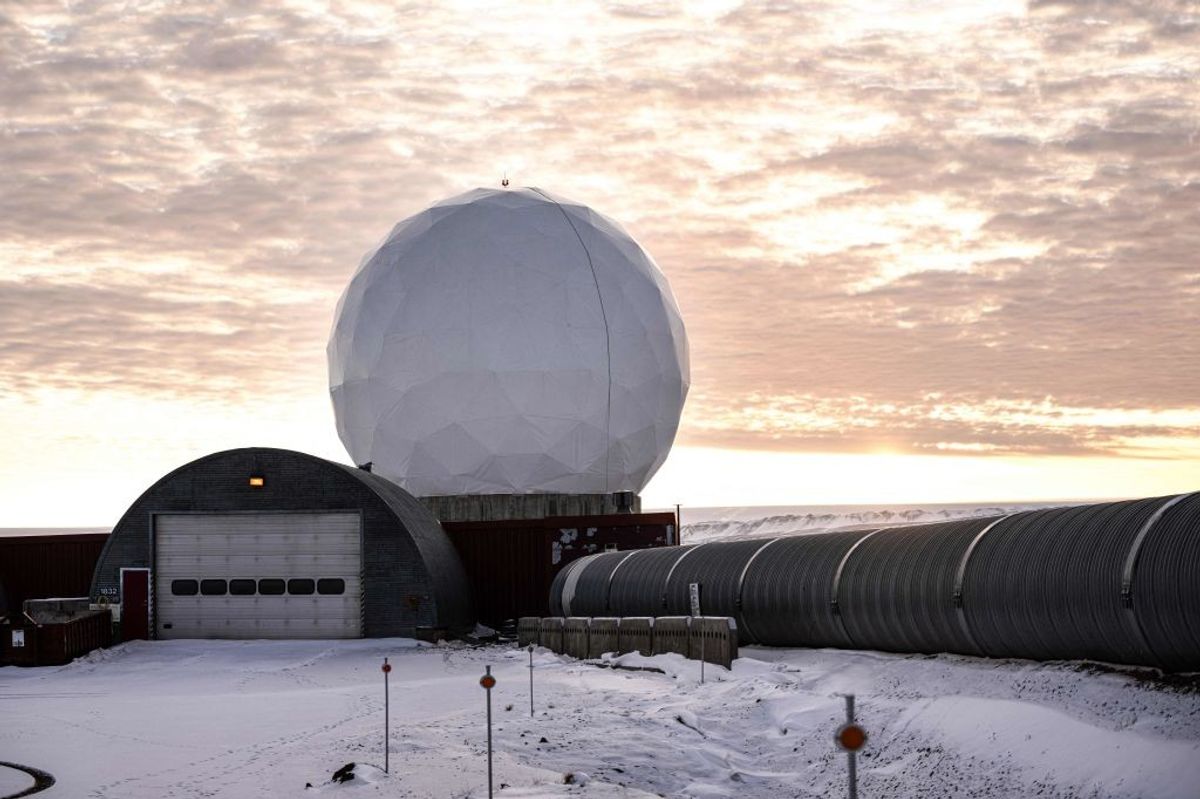OPINION — “We respect that the United States needs a greater military presence in Greenland, as Vice President Vance mentioned this evening [last Friday]. We – Denmark and Greenland – are very much open to discussing this with you, with an open mind. We still have the [Greenland] defense agreement [between the United States and Denmark] from 1951. It offers ample opportunity for the United States to have a much stronger military presence in Greenland if that is what you [the United States] wish. Then let us discuss it.”
That was Danish Foreign Minister Lars Løkke Rasmussen, speaking late last Friday on a video posted to social media after Vance’s visit to Greenland.
Rasmussen also pointed out that “In 1945, the United States had 17 bases and military installations in Greenland with thousands of soldiers. Today, only one American base is left – the one Vice President Vance visited a few hours ago – and something like 200 soldiers. We can do more, much more, within the framework we have today. Let’s make use of that, and let’s do it together.”
The fine print – from 74 years ago
The 1951 agreement permits the U.S., with the agreement of Denmark, to create new “defense areas” in Greenland “necessary for the development of the defense of Greenland and the rest of the North Atlantic Treaty area, and which the Government of the Kingdom of Denmark is unable to establish and operate singlehanded.”
The agreement says further: “the Government of the United States of America, without compensation to the Government of the Kingdom of Denmark, shall be entitled within such defense area and the air spaces and waters adjacent thereto to improve and generally to fit the area for military use.”
Although amended in 2004, when Greenland was given home rule, the revised agreement said specifically that the 1951 provisions “shall apply to the establishment of new defense areas.”
As Foreign Minister Rasmussen said, there is nothing stopping the Trump administration from increasing its current military presence in Greenland if it wants to, without taking control over the entire island.
In fact, during his three-hour visit Friday to the U.S. Pituffik Space Base in northwest Greenland, Vice President Vance was asked by a reporter, “Are there plans to expand the U.S.’s military presence in Greenland beyond this base?”
Vance responded, “No. But are there general objectives that we want to accomplish that will certainly require us investing more resources, investing in additional military icebreakers, investing in additional naval ships that will have a greater presence in Greenland? Absolutely.”
Experts are gathering at The Cipher Brief’s NatSecEDGE conference June 5-6 in Austin, TX to talk about the future of war. Be a part of the conversation.
Misinformation – and a threat
So, what seems to be going on?
I believe there has been a great deal of misinformation and thus misunderstanding about the Greenland security situation. Much of it began with President Trump’s 2019 remark about wanting to buy Greenland, and it heated up with Trump’s January 2025 statement that “ownership and control” of Greenland was an “absolute necessity,” which also implied the threat that force might be necessary.
Trump also included his Greenland desire in his March 5 speech to a joint session of Congress. It was then that Trump said he had a “message tonight for the people of Greenland,” and added, the U.S. “strongly supports your right to determine your own future, and if you choose we welcome you into the United States of America.” But he went on to claim the U.S. needs Greenland for “national security and international security”, adding “we’re working with everyone involved to try and get it. I think we’re gonna get it.”
Then the President paused, and out came the ad-libbed threat: “One way or another we’re gonna get it.”
While Trump’s verbal campaign was underway, Denmark and Greenland officials were not only making it clear they opposed any U.S. attempts to buy or take over the giant island, but they also were moving to meet the security threats that Trump had been talking about.
On January 27, Denmark’s Defense Minister Troels Lund Poulsen announced a $2.1 billion security package for Greenland and the Arctic area that included purchase of three Arctic naval icebreaker vessels capable of carrying helicopters and drones; two long-range drones with the “ability to conduct surveillance over large areas at great distances;” and increased situational awareness through additional satellite “capacity.”
Currently, according to a NATO release, a fleet of four Danish patrol vessels protect the waters of Greenland year round, operating under the country’s Joint Arctic Command based in Nuuk, Greenland’s capital.
Ignoring what Denmark has publicly announced as security upgrades now underway, Vice President Vance said during his brief talk Friday to American servicemen in Greenland that “Denmark has not kept pace in devoting the resources necessary to keep this base, to keep our [American] troops and in my view, to keep the people of Greenland safe from a lot of very aggressive incursions from Russia, from China and from other nations.”
Vance criticized the Danes for “a lot of attacks at the Trump administration, at the president, at me, at others in our administration for saying the obvious, which is that Denmark hasn’t done a good job at keeping Greenland safe.”
Vance closed his remarks by saying, “We believe in the self-determination of the population of the people of Greenland. And our argument is very simple. It is not with the people of Greenland, who I think are incredible and have an incredible opportunity here. Our argument really is with the leadership of Denmark, which is under-invested in Greenland and under-invested in security architecture. That simply must change.”
But when asked directly by a reporter if “the U.S. is very serious about acquiring Greenland,” Vance backed down saying, “When the President says we’ve got to have Greenland, he’s saying this island is not safe…So our message is very simple. Yes, the people of Greenland are going to have self-determination. We hope that they choose to partner with the United States because we’re the only nation on Earth that will respect their sovereignty and respect their security because their security is very much our security as these brave Americans show.”
Everyone needs a good nightcap. Ours happens to come in the form of a M-F newsletter that provides the best way to unwind while staying up to speed on national security. Sign up today.
What the Greenlanders say
If it’s really left up to the people of Greenland, it’s doubtful they will seek a partnership with Trump’s United States. The March 11 election showed voters most concerned by threats not from Russia, but from President Trump, with the result that a surprise victory was won by 33-year-old Jens-Frederik Nielsen’s center-right Demokraatit Party that favors a slow path to independence.
Danish Defense Minister Poulsen congratulated the Demokraatit Party and said the future Greenlandic government would likely have to "deal with massive pressure from U.S. President Donald Trump."
On Friday, just hours before Vance’s party arrived at the U.S. Pituffik Space Base, Nielsen announced his new coalition government will include members of four of the island’s five major parties. Left out will be the Naleraq Party, which has been more closely aligned with President Trump’s views.
In his first press conference as prime minister, Nielsen said, "At a time when we as a people are under pressure, we must stand together." Greenlanders understood Nielsen’s reference to “pressure” was that coming from the U.S.
President Trump, in a telephone interview last Saturday with NBC News, seems undeterred about events in Greenland. Trump said he has “absolutely” had real conversations about annexing Greenland, and, according to NBC added, “We’ll get Greenland. Yeah, 100%.”
However, NBC also reported that Greenland’s Prime Minister Nielsen had responded on Facebook, “President Trump says the United States is 'getting Greenland.' Let me make this clear: The U.S. is not getting that. We don’t belong to anyone else. We decide our own future."
Right now I am betting on Nielsen.
The Cipher Brief is committed to publishing a range of perspectives on national security issues submitted by deeply experienced national security professionals.
Opinions expressed are those of the author and do not represent the views or opinions of The Cipher Brief.
Have a perspective to share based on your experience in the national security field? Send it to Editor@thecipherbrief.com for publication consideration.
Read more expert-driven national security insights, perspective and analysis in The Cipher Brief








